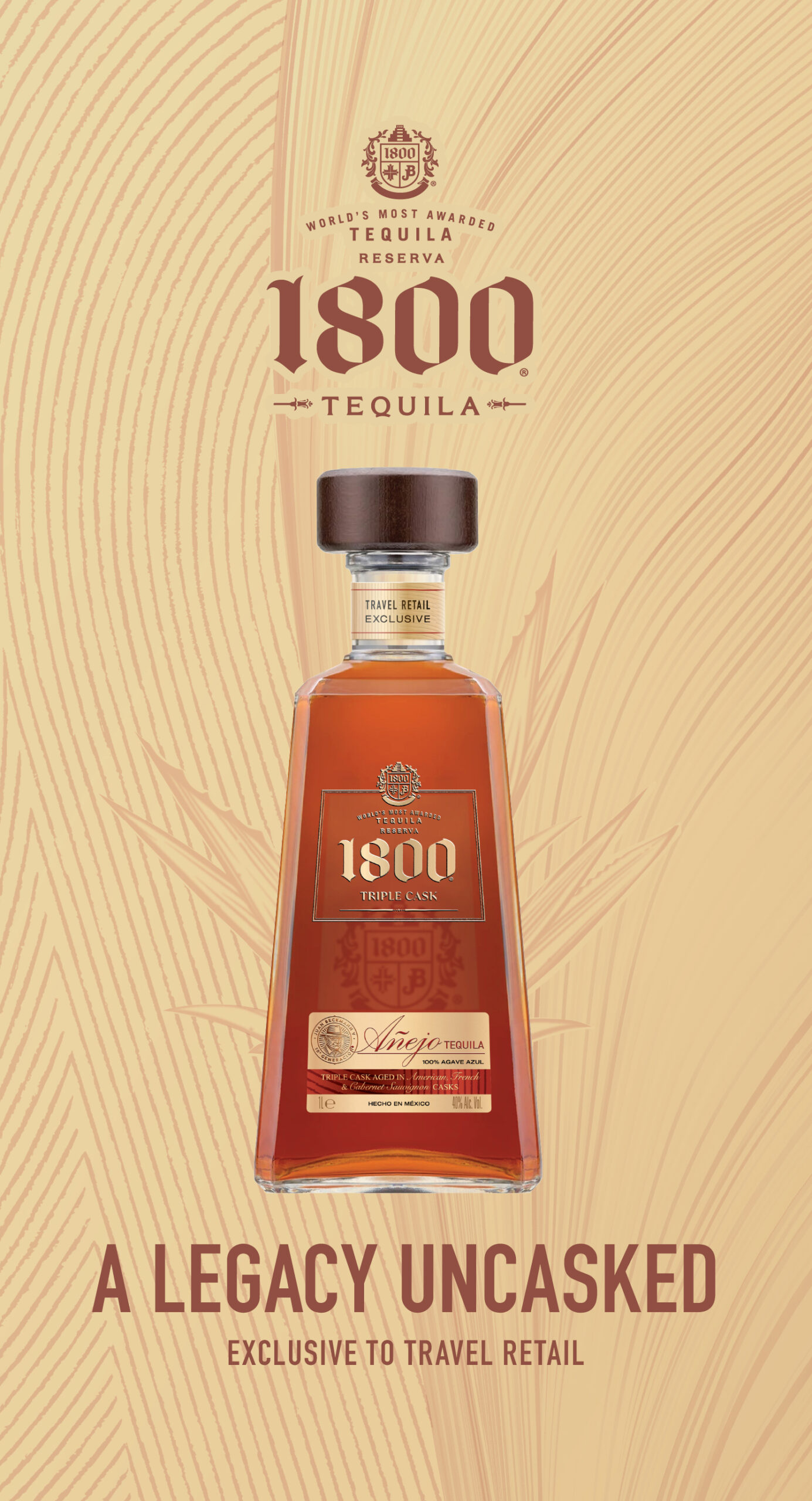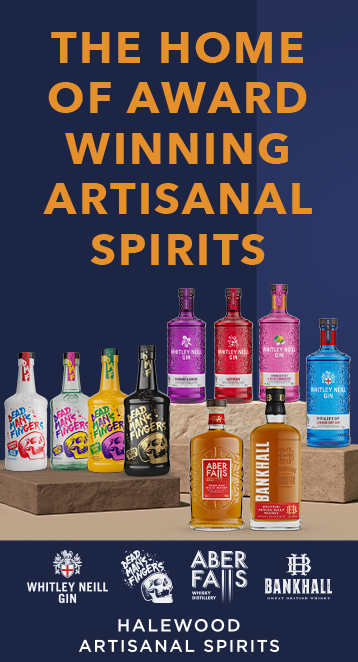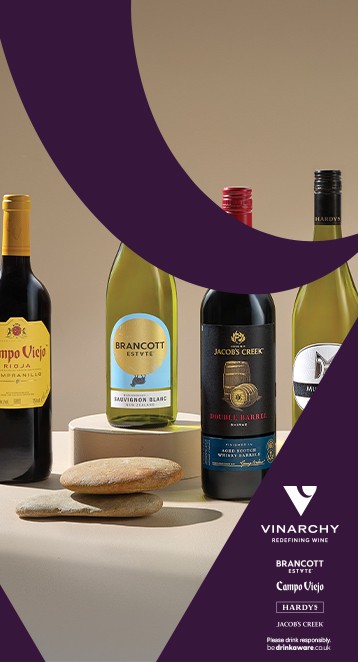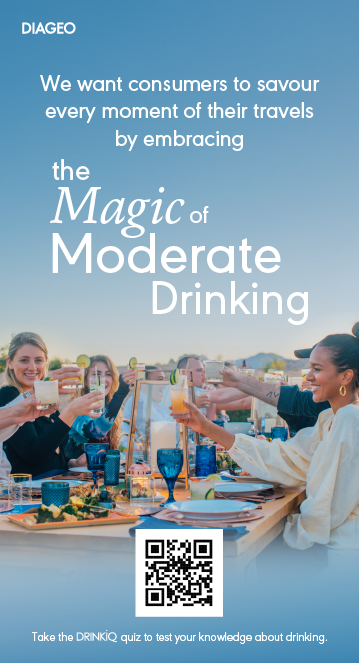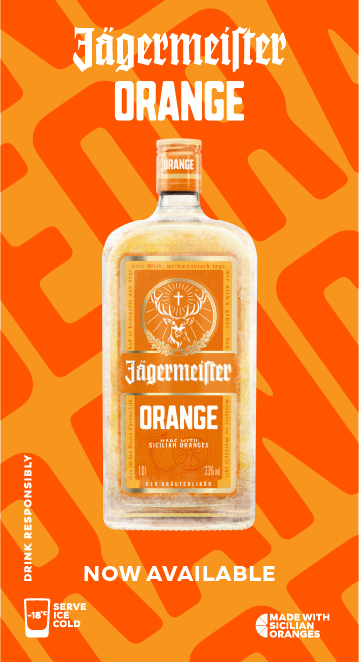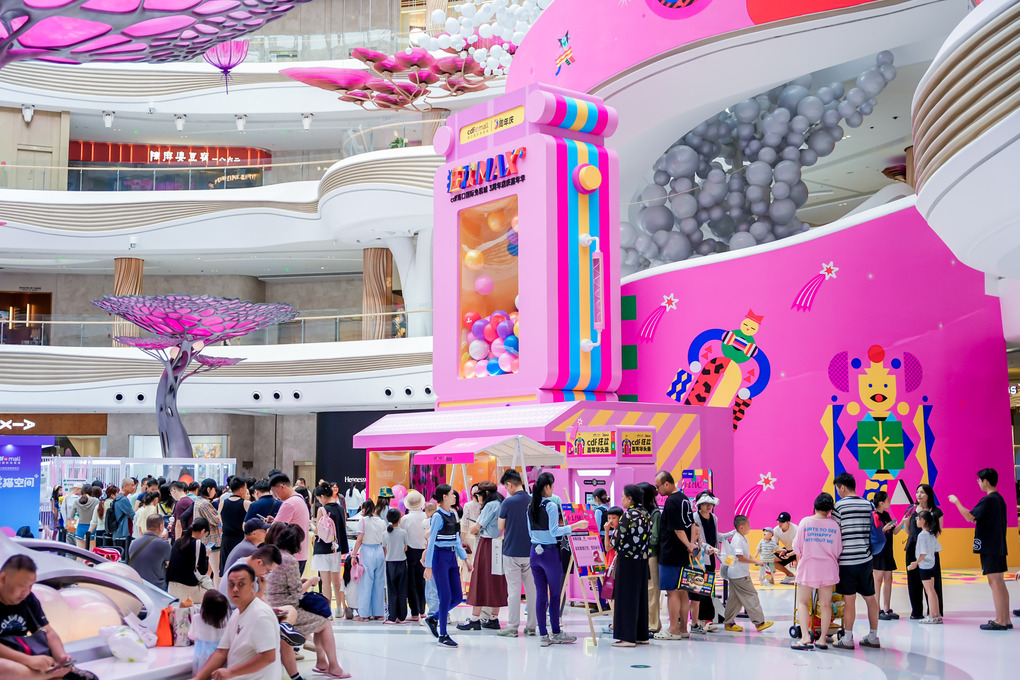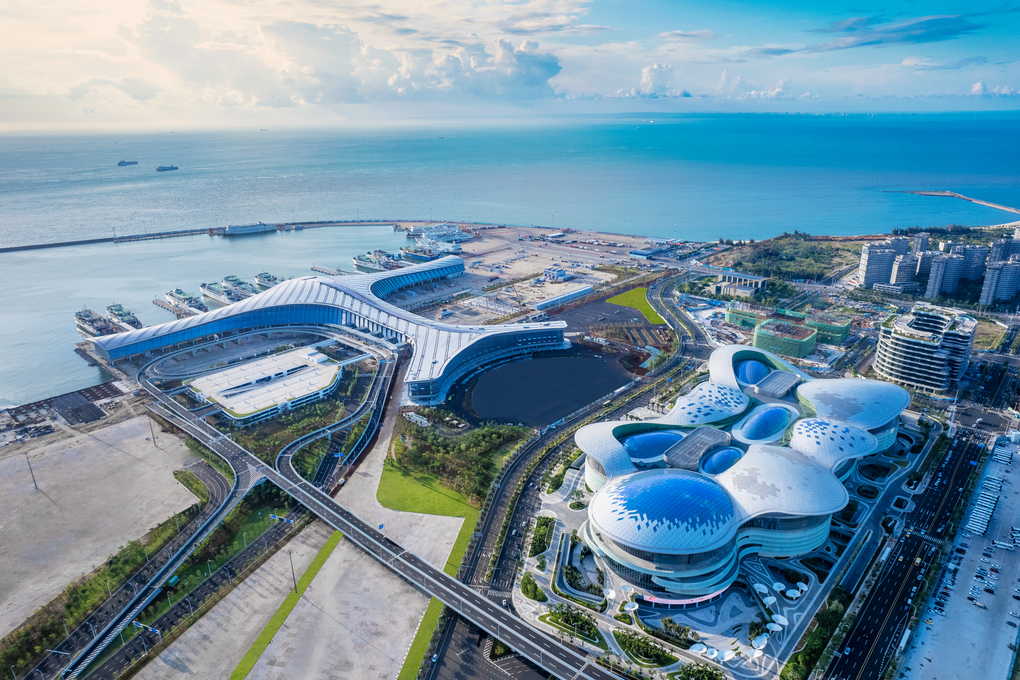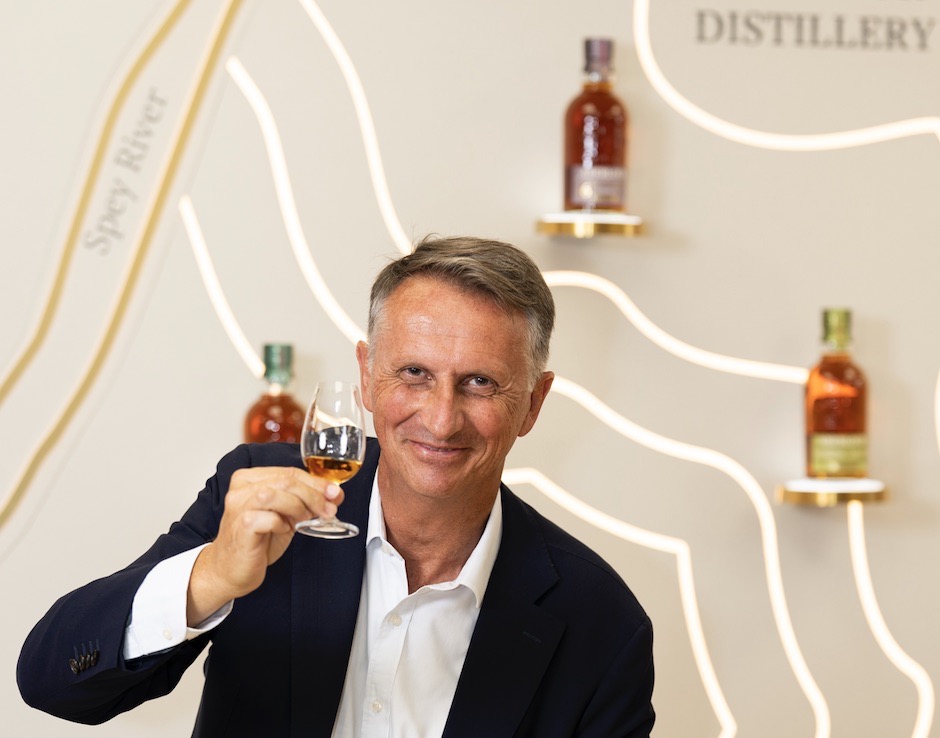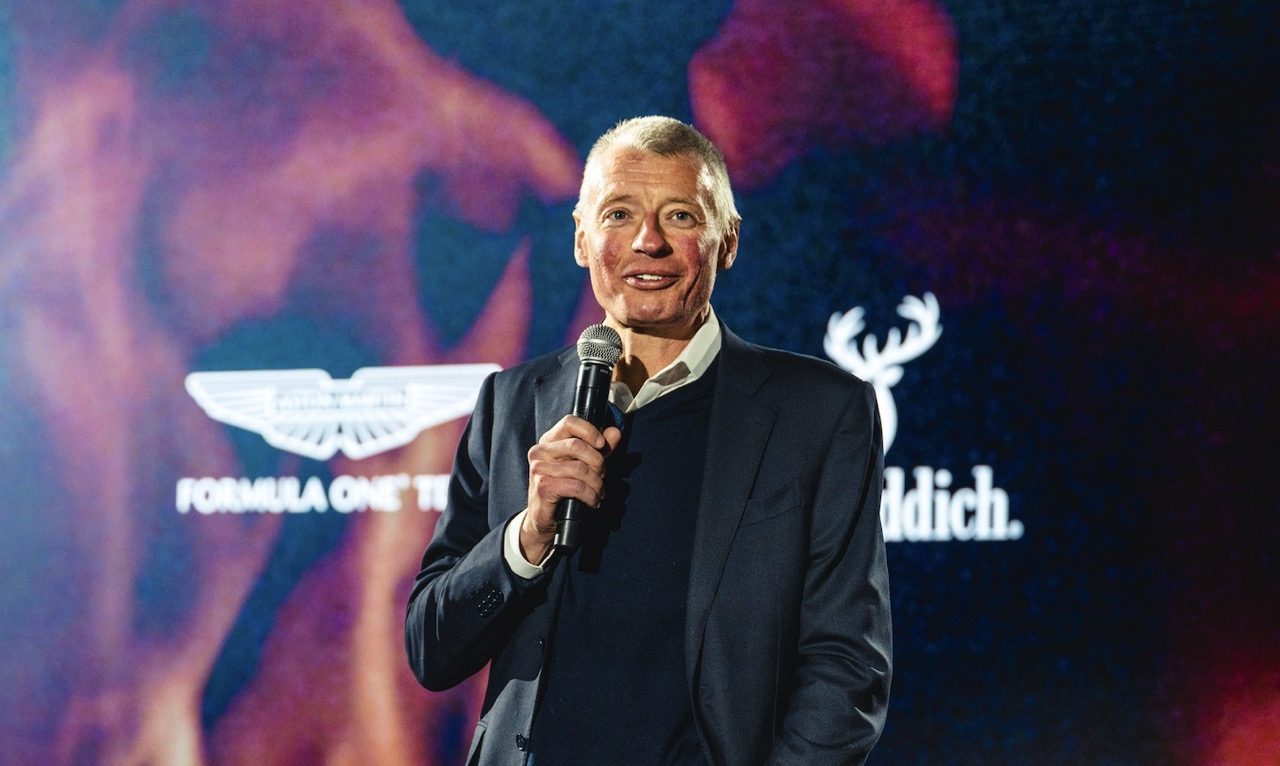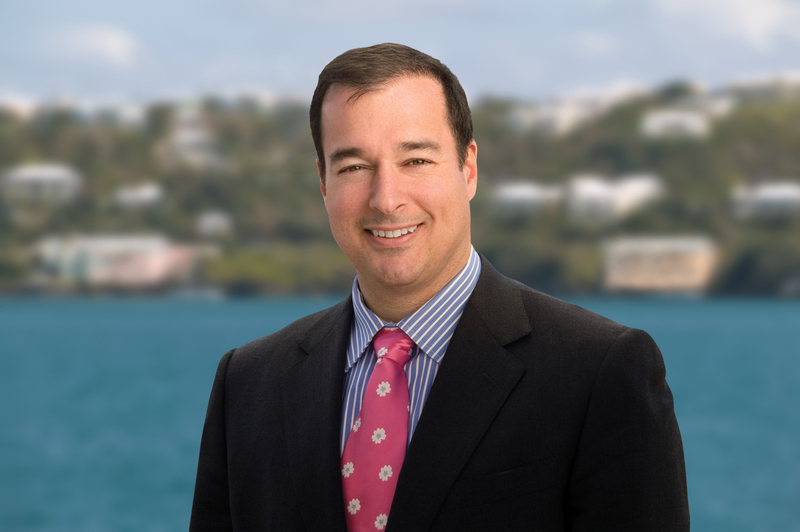 When your family name is on every bottle of rum your company produces, you are likely to be acutely conscious of history. If you also happen to be the great-great grandson of the founder (and carry the same first name), it is certain that you also understand the legacy implicit in that history. Such is the case with Facundo L Bacardi (right), Chairman of Bacardi – the world’s largest privately held spirits company – since 2005 and a Board Director since 1993.
When your family name is on every bottle of rum your company produces, you are likely to be acutely conscious of history. If you also happen to be the great-great grandson of the founder (and carry the same first name), it is certain that you also understand the legacy implicit in that history. Such is the case with Facundo L Bacardi (right), Chairman of Bacardi – the world’s largest privately held spirits company – since 2005 and a Board Director since 1993.
Does he feel the burden of the generations, more than a century and a half on from the founding of the company in Cuba by Don Facundo Bacardí Massó? “I feel responsibility but no, it doesn’t weigh on me,” he replies, speaking to The Moodie Davitt Report during a visit to the TFWA World Exhibition in Cannes.
“Being born into the family, and growing up hearing a number of things about Bacardi; seeing a very large family interact; and all the time picking up bits and pieces from multiple quarters… I don’t want to say it’s second-nature but it is certainly very natural.
“The responsibility is something that I put on myself. When I became Chairman in 2005 I said my singular objective was to hand the company over to another family member in far better shape – not that it was in bad shape then. It is a natural progression. I look at my tenure as being one of trying to expand the portfolio and geographical reach, and to premiumise the portfolio, while doing a lot of good things for the family shareholders.”
 Today’s Bacardi, headquartered in Bermuda, is a very different proposition from the tiny mono-brand rum company founded in Santiago de Cuba in 1862. A thriving, multi-national spirits producer, its portfolio comprises an intriguing mix of brands, ranging from the category-transcending (Bacardi rum) to the ‘challenger’ (Dewar’s), with a host of powerful names in between – including Grey Goose vodka, Bombay Sapphire gin, Martini vermouth and sparkling wines, Otard Cognac and Cazadores tequila.
Today’s Bacardi, headquartered in Bermuda, is a very different proposition from the tiny mono-brand rum company founded in Santiago de Cuba in 1862. A thriving, multi-national spirits producer, its portfolio comprises an intriguing mix of brands, ranging from the category-transcending (Bacardi rum) to the ‘challenger’ (Dewar’s), with a host of powerful names in between – including Grey Goose vodka, Bombay Sapphire gin, Martini vermouth and sparkling wines, Otard Cognac and Cazadores tequila.
The company also boasts several single malts, until now relatively unheralded outside the realm of whisky aficionados, that are fast making their presence felt in several channels, notably travel retail.
““Whether it’s a board meeting or a shareholders’ meeting, my family doesn’t have an ego,” Facundo Bacardi comments, elaborating on the dynamics of family ownership. “We always focus on doing the right thing for the business. Are we thinking long term or does management need to do more things today rather than further down the road?
“I would say the consensus approach to this business has been one of wanting to grow every year and saying that over the long term we’re going to get to where we want to be.
“So it’s a very level-headed approach. I go back to the ego question because I’ve heard other family members in different companies saying that they want to be the best. They use such words to map out a position but that puts them in a box.” The Bacardi approach is different, he insists. As time passes and society, markets and channels evolve, the company wants to remain flexible – both proactive and responsive. “We want to be a leader in whatever direction we take,” he says.
What’s the biggest battle he’s faced since assuming Chairmanship? And the highlight? “The most difficult challenge is all these regulatory issues,” Bacardi replies, “things that pop up, markets going dark. The governmental affairs perspective constantly plays on my mind.
“The highlight has been helping to continue a transition from being purely a family company into one that incorporated a number of non-family members – and getting the family to buy into it,” he continues. “For us to be here for another 150 years it was something that needed to be done.
“We’ve had our ups and downs but I believe we’re in a very good place now. All the shareholders would agree that the transition has been completed and now we’re focusing on other things.”
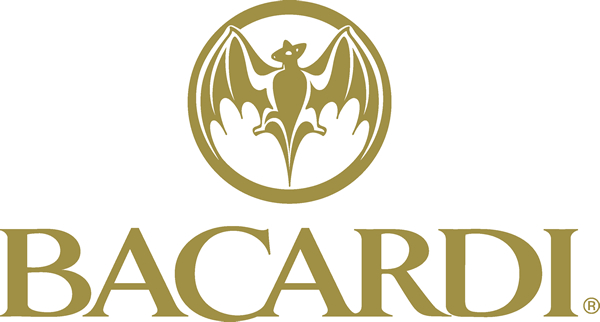 One of those things, demonstrably, is travel retail. Historically, I put it to him, the company had something of an on/off love affair with the channel, certainly in terms of committing dedicated resources to it. That has clearly changed over the past decade, since the 2006 creation of a global travel retail division, a thrust that appears to have gained added momentum over the last 18 months or so. So how does Bacardi – the man and the company – assess the channel’s value and role?
One of those things, demonstrably, is travel retail. Historically, I put it to him, the company had something of an on/off love affair with the channel, certainly in terms of committing dedicated resources to it. That has clearly changed over the past decade, since the 2006 creation of a global travel retail division, a thrust that appears to have gained added momentum over the last 18 months or so. So how does Bacardi – the man and the company – assess the channel’s value and role?
“In years past the lack of focus wasn’t an indication that it wasn’t an important channel,” he replies. “It was more of an acknowledgement company-wide that we had so many other things to do.
“We’ve been transitioning from being primarily a family-run company into something that is less family-focused with more senior management who are non-family members. As we brought in more and more talent, we realised that we were inadequate in certain areas.
“And as we addressed those areas over the years, duty free became front and centre. It’s something that we recognise is here for the long term.”


Adds Bacardi Global Travel Retail Vice President, Managing Director Mike Birch: “Because of the nature of the business, with customers operating across regions and continents, we need to be unified in how we organise. Overwhelmingly our interest in the channel is where its strengths lie – i.e. as a place to build brands where you can sample our great liquids and signature drinks; a place where you can tell your product stories.
“It’s a place where you can bring brands to life on the shelf and through activations – such as the recent Bombay Sapphire virtual reality activation at Heathrow (pictured below) – where you just go to another level. We encompass all of those things; it is a brand-building channel.”
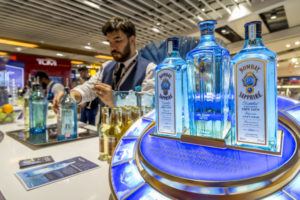

Chief Executive Officer Mike Dolan, who assumed the role in May 2014 (joining from sports, fashion and media group IMG Worldwide, where he was Chairman & CEO) adds: “We think that we have actually under-indexed against where we should be [in the channel] in the past. So over the past year, for sure, we’ve made a very significant investment in global travel retail, both in terms of much more A&P and a lot of spending going into what we call structure cost – which shows up as brand ambassadors in the airports.

“In the past two years we have doubled the number of ambassadors – we have close to 300 now. The payoff in terms of the quality of the experience that the consumer has when we have well-trained and well-selected ambassadors is fantastic. So we’re deeply committed to it.
“We’re not interested in price discounts. We’re interested in creating an experience around the brands. We want people to really understand what makes these brands unique and what’s made them exist for over 150 years.”
What’s Facundo Bacardi’s take on how liquor is represented in the channel? “It varies, sometimes even within airports,” he responds, contrasting certain US air terminals with the best of Europe and Asia. “I wish everywhere looked as good as Terminal 5 in Heathrow. Maybe one day it’ll look like that but right now it does vary a lot.”
But the trend is in the right direction and the sector outlook positive, he and the company believe. “Despite all the challenges, significant passenger growth is the underlying trend,” says Birch. “And that is being met by better and more premium quality retail space. That’s the long-term part of the business that we’re really excited about.”
Dolan underlines that confidence with a telling anecdote: “A year ago as we were getting ready for the group budget, Mike [Birch] came in with his budget for this year and we said ‘Why don’t you give us a more aggressive plan?’. So he came back with a more aggressive plan. Then we said, ‘Why don’t you give us a really aggressive plan?’ And he came back with another. So we see this as a great opportunity to double down as the competition is pulling back. There is a blip currently but we don’t think it’s a long-term one. We think growth will recover and that this is an opportunity for us to create long and deep relationships within the channel.”
“Travel retail is an incredible channel. It’s critically important to us and it’s something that we are going to invest in for a long time to come.” – Facundo L. Bacardi

It’s an interesting take on the market, one that taps into the consistent universality of forecasts – whether the source be Boeing, Airbus, IATA, ACI or the UNWTO – that the potential shopper base, i.e. passenger volume, is going to grow and grow. Bacardi’s challenge, as with all its rivals, is to convert them from travellers to spenders. What’s the key to that formula?
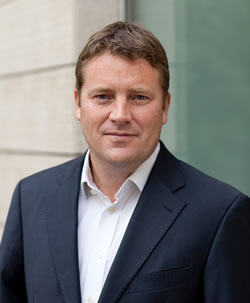
Birch replies: “If you’re talking about the growth markets like India and China, we have a slightly different dynamic to most spirit companies, in that we haven’t really been big players with those operators. We’ve got two strands to our strategy – firstly, we’ve got iconic, core international brands, which consumers in these markets are buying in greater and greater numbers. The Indians with Grey Goose, for example, is a phenomenon that we’re seeing starting to happen.
“We’re even seeing Asian consumers buying into gin and Bombay Sapphire in particular. Of course, what we’ve never had is a whisky business [with this demographic], so secondly we’ve now got aged, high-quality liquids [malt whiskies as well as the high-end Dewar’s lines -Ed]. We’ve been astonished at the extent to which these Asian and Indian travellers are prepared to buy our brands immediately without that much overall awareness in domestic markets.
“So it’s a great opportunity for us to grow off the back of that. But primarily the business is viewing that development as the initial stepping stone in building awareness for those brands in the domestic markets.”
Home is where the heart is Like all Cuban Americans, Facundo L. Bacardi is fascinated by recent changes to the US/Cuban relationship, though he warns against expecting too much real change in the short term [this interview was conducted several weeks before Donald Trump’s shock victory in the US Presidential election, a result that could threaten the Obama administration’s policy of rapprochement]. Bacardi was forced out of Cuba in 1960 after the-then revolutionary government confiscated all its assets there. It remains a painful watershed in the company’s evolution but one that ultimately laid the platform for its multi-national presence today. “The embargo remains in place. Fidel and Raul [Castro] are still prominent. Raul’s in power, Fidel is retired but still exerts tremendous influence throughout the country. So, not much has changed. “For us, it’s really no different than it’s been over the last 60 years,” says the Bacardi Chairman. “Cuba’s our home. I’m fifth generation. We have members of the family in the eighth generation. Up through the fifth generation two-thirds of the family members were born in Cuba. “So Cuba is not only the ancestral home, it is also the birthplace of so many family members. They still refer to themselves as being Cuban even though they live in the USA. “Do they want to go back to Cuba and help Cubans? Absolutely. But for us being in Cuba is not because it’s a commercial opportunity. It’s being in Cuba because it’s where the company was started.” |
Chief Marketing Officer Europe Shane Hoyne adds: “We’ve also taken a pretty honest look at what we were doing in the channel and we’ve made some changes. We looked, for example, at the role of ambassadors versus spending a Dollar somewhere else. We looked at the Chinese consumer to determine where they are actually doing their purchasing. We asked whether we were presenting our brands in the most relevant way for Chinese consumers in Los Angeles or in other airports around the world.
“Mike’s done a great job of understanding the priority airports and how we turn up there – and that might be very different to how we turned up in the past. Then we’ve considered how we spend our investment on, say, ambassadors versus displays, and assessing the best return.
“We learned a hell of a lot this year. It’s about being really honest about what’s going on and optimistic about the future. Taking this long-term view means you can ride out the blips but it is also about being nimble and being able to change tack as we see the changes coming.”
Travel retail v domestic markets – a question of balance
How does the group see the relationship between local markets and travel retail – a perennial internal tension for most drinks companies?
Dolan replies: “I think historically our GTR division has functioned almost as a separate organisation; an export organisation within the company. Over the past year or so we’ve tried to build it back into the fabric of what we’re doing in a particular country. When there’s an event in Milan, the Formula One race in Monza for example, it should be the case that when someone arrives at the airport it is connected to all of the activities that we have around the race at Monza. And you could duplicate that story around the world.
“We’re trying to build the relationships between Mike’s organisation and the local activities that we have in each of the countries. We’re in the early days of that but it’s beginning to take root.”
Hoyne adds: “There’s a real overlap, particularly in the emerging markets, between the traveller and the domestic consumer. It’s largely the same person so we have to make sure that as the brand turns up in travel retail it reflects how the brand is turning up in domestic. In travel retail it should be the best presentation of the brand possible so when the consumer goes back to domestic the halo is absolutely there.
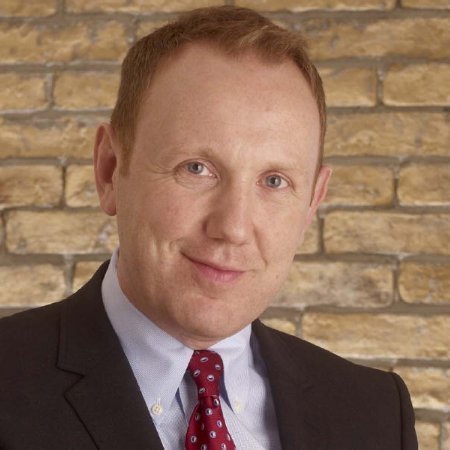
“We can only do that if the left hand is talking to the right hand. It’s reflective of most drinks companies, not just ours, that travel retail has tended to be somewhat of its own division and have its own walls. It’s been surprisingly easy to break down those walls… and we’re seeing the activations are kicking in very quickly. It’s something we’ll do more and more in the future. How do you make sure that there is just one agenda and it plays out in two different locations?”
Birch picks up on the point: “We have a mentality that these are not just GTR consumers but consumers [from domestic markets] that we bump into as they travel. In some key emerging markets, the amount of sales that we are making to those consumers is a very high proportion of the total sales in those markets – very high double-digits, for example, in China, India, the Middle East and Africa.”
That springboard opportunity for a relatively unknown brand in domestic terms – for example the superb Speyside malt Craigellachie, an almost hidden gem – seems particularly strong, I suggest.
“Absolutely,” says Hoyne. “If you take [single malts] Royal Brackla, Craigellachie and Aberfeldy, travel retail is the brand builder in many ways. We execute flawlessly. All of these brands are on allocation yet we are quite liberal in how we allocate stock to travel retail because we believe it’s important long term to get into the mindset of people. And when you look at how travel retail at its best does whisky, you have to be part of that world. It’s a phenomenal experience.
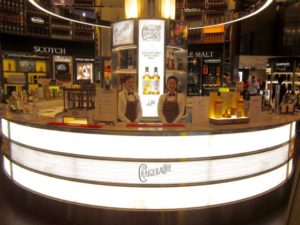
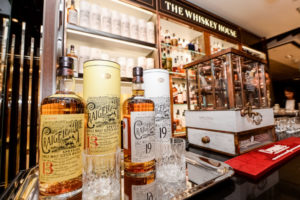
“We’re committed to building our malts in travel retail. Travel retail is probably the single biggest source of support for our domestic initiatives on single malts. It’s a really long-term game for us because we want to always commit to having our whiskies aged. We think that’s really important. That means that you grow slightly slower than you would if you’re non-aged, but we’re okay with that. I go back to Facundo’s point about the family business, it’s a long-term play.”
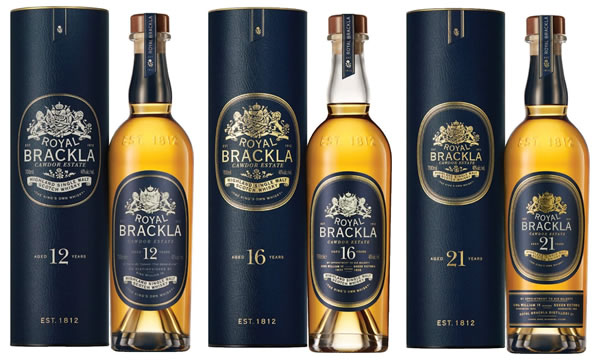
Equally, of course, with limited stock of aged whisky, Bacardi could sell it easily on the domestic market and make more money.
“Yes, it’s a balance,” Hoyne replies. “We do sell more in domestic markets than travel retail. But it’s a balance because it’s strategically important that consumers are exposed to our brands in the best possible environment. We’re not the big guys so we want to turn up looking excellent everywhere, and we see travel retail being a really important part of that. The plan is to build these brands to become powerhouses in ten years’ time.”
Birch adds: “We haven’t really even started yet. Yet Aberfeldy is the 13th-biggest malt in travel retail and it’s the fastest-growing whisky. So malt’s got serious momentum already because the liquids are great, the distilleries are fantastic and we’re bringing them to the market in a controlled manner.”
Where do travel retail exclusives fit within this strategy and, again, what are the financial pressures involved? Hoyne responds: “Travel retail exclusives are really important in certain categories. When we look at brands like Grey Goose and Bombay Sapphire, we don’t need to do exclusives. Our core brands are so strong that people want the core brand offer.
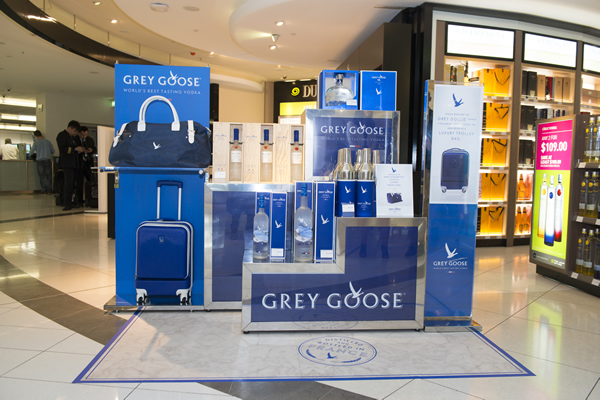
“Exclusives have predominantly been in the world of whisky. For us it’s primarily about whether we are building the brand in the right way for the long term. And if exclusives help us along that journey we’ll do them. If they don’t, we’ll take a very careful road because you can get seduced by the short-term gain. Exclusives are important but they need to be part of a bigger narrative or else they can set you back.”
Adds Birch: “We have launched exclusively first with some of our innovations at Grey Goose. Star of Bombay [a 360° virtual reality shopper experience] was launched beautifully in Sydney – one of the biggest retail outlets for Bombay Sapphire in the world. We’re just about to go live in Bangkok with a beautiful Grey Goose box with the Bangkok skyline on it, which is really buying into the Sense of Place concept that we’re seeing increasingly.
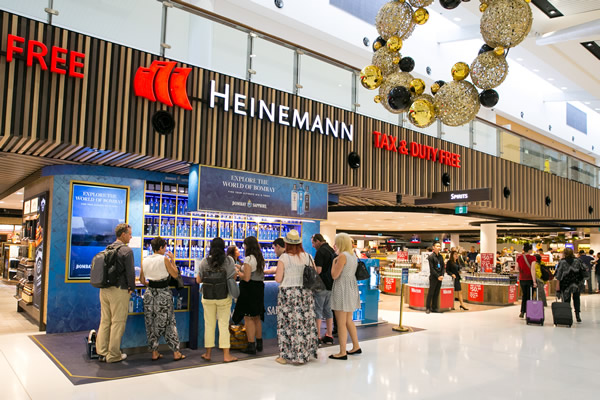
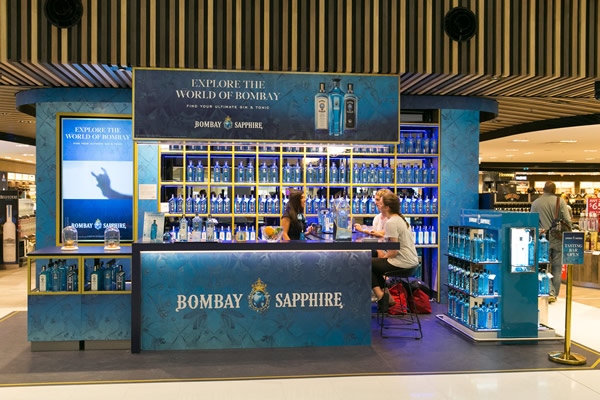 “In answer to your question as to whether we’re under pressure on travel retail exclusives because of the margin demands, we see travel retail as a brand-building channel. It’s the right thing to do to grow those brands so we’re not locked into some of the pressures that our competitors have been talking about.”
“In answer to your question as to whether we’re under pressure on travel retail exclusives because of the margin demands, we see travel retail as a brand-building channel. It’s the right thing to do to grow those brands so we’re not locked into some of the pressures that our competitors have been talking about.”
Facundo L. Bacardi’s presence at the Cannes show sent out a powerful signal to his team and the wider industry about his confidence in the travel retail sector. “It’s an incredible channel,” he says. “It’s critically important to us, it’s critically important to our competitors and it’s something that we are going to invest in for a long time to come.”
Capturing 150 years in a collection One of the highlights of Facundo L. Bacardi’s stint as Chairman of Bacardi came earlier this year when the company unveiled the Facundo Rum Collection, a limited-edition release of four luxury blends drawn from the Bacardí family’s private rum reserve. The range was launched initially as a duty free exclusive at Los Angeles, San Francisco and New York JFK airports, though it is now also available in the South Florida local market.
“Don Facundo experimented with different blends and different types of rums. For our 150th celebration we first wanted to come out with one expression, although we realised that we have so many different types. So we decided to come out with four, just to be representative of some of the experimentation from the past. “Every single one of those rums has its own independent story, from the way that they were aged to the way that they were blended. So, it was an exciting project.” He personally ran the blind-tasting evaluation programme (split into two groups involving in-house and external assessors) that underpinned the ultimate selection. At a rum festival in Miami no less than 45 judges blind-tasted a line-up of 12 blends. “Some were experimentals, some were our competitors,” Bacardi recalls. “We took notes on everything the judges said. After this we continued tweaking, doing different things, trying to find the right profile in our collection. It was a lot of fun and I probably learned more from people who were unaffiliated with the company than I did from those who were affiliated.”  |





 “I was very involved,” Facundo L. Bacardi says. “It was an exciting project in the sense that while we have Bacardi on the bottle we have never highlighted what the founder’s first name is. We wanted to do something special for [Don] Facundo Bacardi.
“I was very involved,” Facundo L. Bacardi says. “It was an exciting project in the sense that while we have Bacardi on the bottle we have never highlighted what the founder’s first name is. We wanted to do something special for [Don] Facundo Bacardi.